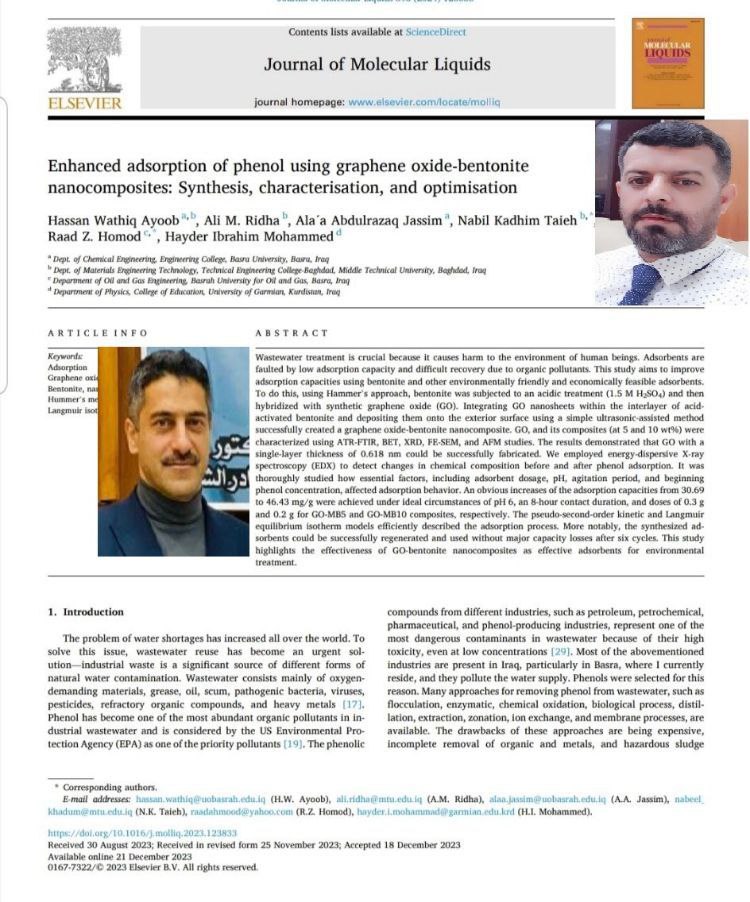
Professor Dr. Alaa Abdul Razzaq Jassim and Assistant Lecturer Hassan Wathiq Ayoub, teachers from the University of Basra, College of Engineering, Department of Chemical Engineering, published in a solid international magazine from the first quarter, Q1, which is
(Journal of Molecular Liquids)
It is considered one of the most prestigious journals in the field of chemical engineering and nanomaterials.
The research includes the random discharge of non-biodegradable organic pollutants, such as phenol, from human and natural sources in huge quantities into the aquatic environment, which is extremely dangerous to human health and the environment. The adsorption process is considered an effective, economical and simplest water treatment technology. The use of appropriate adsorbents plays an important role in the adsorption capacity. Therefore, the study focused on the use of effective, abundant, cheap and environmentally friendly absorbent materials such as bentonite. Iraqi bentonite was improved by treating it with concentrated sulfuric acid and then hybridizing it with graphene oxide, which was prepared by the Hummer method. The graphene oxide-bentonite nanocomposite was prepared by intercalating the graphene oxide nanosheets into the activated bentonite layer in an easy way. It is the use of ultrasound. The adsorbents were examined using an infrared spectrometer (ATR_FTIR), a surface area calculator (BET), an X-ray diffraction device (XRD), a scanning electron microscope (FE_SEM), and an atomic force microscope (AFM). We also used energy dispersive X-ray spectroscopy (EDX) to detect changes in the chemical composition before and after phenol adsorption.
The results showed that graphene oxide was successfully prepared with a single layer thickness of 0.618 nm. The results also showed an increase in the surface area from 20.992 m2/g for raw bentonite to 184.312 m2/g for the hybrid compound.
The phenol removal efficiency was studied under different conditions including adsorbent dosage, pH, contact time and initial concentration. The adsorption efficiency under optimal conditions was 99.926%https://authors.elsevier.com/c/1iIetc8qpaYJb








